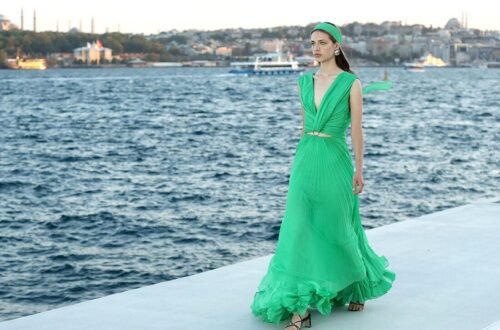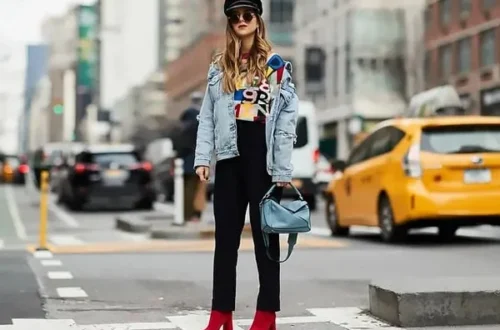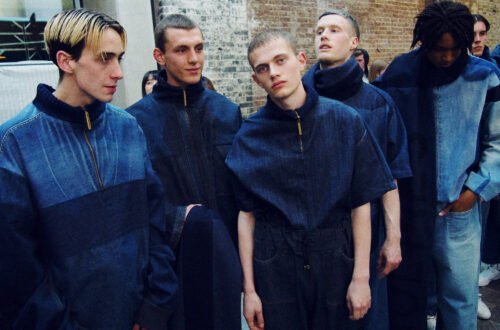Hey there, fashion lover. Let me take you back to a moment that changed how I shop. A few years ago, I was rummaging through my closet, staring at a pile of cheap tops that had lost their shape after just a few washes. I felt that familiar guilt—knowing my impulse buys were probably made in some factory with unfair wages and heaps of waste. That’s when I decided to try conscious fashion. But here’s the kicker: I thought it meant splurging on designer eco-pieces I’d never afford. Boy, was I wrong. Turns out, you can snag stylish, ethical items under 10,000 rupees that look great and feel even better on your conscience. In this article, I’ll share real examples, tips, and stories to show you how conscious fashion fits any budget. Stick around; you might just revamp your wardrobe without breaking the bank.
What Is Conscious Fashion?
Conscious fashion is all about making clothes with the planet and people in mind. It focuses on ethical practices like fair wages, eco-friendly materials, and minimal waste. Unlike fast fashion that churns out trends cheaply, this approach ensures every piece has a positive impact.
Think of it as dressing with intention. Brands use organic cotton, recycled fabrics, or traditional hand-weaving to cut down on harm. I’ve worn a simple organic tee that lasted years, proving quality over quantity wins every time.
Why Choose Conscious Fashion on a Budget?
Switching to conscious pieces doesn’t mean emptying your wallet. It’s about smart choices that save money long-term through durable items. Plus, it feels good knowing your outfit supports fair labor and reduces pollution.
I once bought a budget fast-fashion dress that fell apart after one party—total waste. Now, I hunt for affordable ethical alternatives, and my closet thanks me. It’s empowering to vote with your rupees for a better world.
Busting the Myth: Is Conscious Fashion Always Expensive?
No way—many brands prove otherwise with clever innovations. They source locally or upcycle materials to keep costs down without skimping on style. Affordable options are popping up everywhere, making it easier to go green.
From my experience, starting small with one piece under 5K builds confidence. You’ll see the difference in fit and feel, turning skeptics into believers overnight.
Where to Find Budget-Friendly Conscious Fashion Pieces
Hunting for these gems? Start online at marketplaces like Ikkivi or brand sites directly. Physical stores in cities like Mumbai or Delhi often have sustainable sections too. Apps and social media highlight sales on ethical wear.
I’ve scored deals on Instagram from local designers—follow hashtags like #SustainableFashionIndia. Thrift apps like OLX also unearth pre-loved conscious items at steals.
Top Online Platforms for Affordable Ethical Clothing
Platforms make it simple. Sites like Ajio or Myntra have dedicated sustainable filters. For niche finds, check Etsy for handmade Indian artisans.
One time, I found a recycled scarf on Etsy for under 2K—unique and eco-chic. It’s my go-to for adding flair without fuss.
Best Pieces Under 10K: Real Examples That Shine
Ready for the good stuff? Here are standout pieces proving conscious fashion is accessible. I’ve pulled from trusted sources like Vogue India, focusing on items under 10,000 INR. Each combines style, ethics, and value.
These aren’t just clothes; they’re stories of craftsmanship. Imagine slipping into something that looks luxe but costs less than a fancy dinner.
Jumpsuits: Versatile and Eco-Smart
Jumpsuits offer effortless style. The Doodlage jumpsuit at Rs 7,500 uses recycled cotton, handwoven in fair-wage workshops. It’s comfy for day-to-night wear.
I wore a similar one to a wedding—got compliments all evening. Ethical fashion like this turns heads without the guilt.
Pros and Cons of Conscious Jumpsuits
Pros:
- Long-lasting fabrics mean fewer replacements.
- Versatile for multiple occasions, saving on wardrobe needs.
- Supports artisans, adding emotional value.
Cons:
- Limited colors in some eco-lines.
- May require special care to maintain sustainability.
Dresses: Flowy and Planet-Friendly
Dresses scream femininity with a green twist. The Dressfolk mulmul dress at Rs 3,300 features hand-block printing without toxic dyes. Perfect for brunches or errands.
My favorite is an Anomaly dress at Rs 6,500—organic and minimal-waste. It hugs just right, making me feel put-together effortlessly.
Tops and Tunics: Everyday Essentials
Tops are wardrobe staples. Nicobar’s tunic at Rs 4,800 uses natural fibers for breathability. Ideal for India’s humid days.
I pair mine with jeans for casual outings—simple yet sophisticated. Conscious choices like this build a timeless collection.
Jackets and Outerwear: Layer Up Sustainably
Jackets add edge. Sui’s structured jacket under 10K boasts Tencel fabric and azo-free dyes. Great for transitional weather.
Once, I layered it over a basic tee—instant polish. It’s proof eco-fashion can be edgy and affordable.
Sets and Coordinates: Mix-and-Match Magic
Sets offer value. Vanaras’ pink monochrome skirt set under 10K uses biodegradable textiles in small batches. Mix them for endless looks.
I love how versatile they are—skirt with a crop top one day, full set the next. Budget-savvy and stylish.
Comparison: Conscious Fashion vs. Fast Fashion Under 10K
Wondering how they stack up? Here’s a quick table to compare key aspects. Based on real market insights, it shows why conscious wins for value.
| Aspect | Conscious Fashion | Fast Fashion |
|---|---|---|
| Material Quality | Organic/recycled, durable | Synthetic, prone to wear |
| Ethical Impact | Fair wages, low waste | Often exploitative labor |
| Price Example | Dressfolk dress Rs 3,300 | Similar style Rs 1,500 but short-lived |
| Longevity | Lasts 2-3 years | Fades after months |
| Environmental Cost | Minimal pollution | High water/chemical use |
This comparison hits home for me. I used to chase fast trends, but now I invest in pieces that endure. Check out more on fast vs. slow fashion in our internal guide on sustainable wardrobes.
People Also Ask: Common Questions on Budget Conscious Fashion
Diving into Google, folks often wonder about basics. Here are real PAA questions with straightforward answers to satisfy your curiosity.
What Does Conscious Fashion Mean?
It means clothing made ethically and sustainably, prioritizing people and planet over profits. Think fair trade and eco-materials.
From brands like Sui to global ones like Pact, it’s about transparency. External resource: Learn more at The Good Trade’s fair trade guide.
How Can I Shop Sustainable Fashion on a Budget?
Start with thrift stores, sales, and affordable brands like Kotn or H&M Conscious. Set a monthly budget for one quality piece.
I’ve built my collection this way—patience pays off. Apps like Depop help find second-hand steals.
Is Sustainable Fashion Affordable?
Absolutely, with options under 10K proving it. Brands innovate to cut costs while staying ethical.
No more excuses; even basics like tees from Quince fit tight budgets. It’s about choosing wisely.
What Are Examples of Affordable Sustainable Brands?
Kotn for tees, Tentree for casual wear, and Indian labels like Rias Jaipur. They use organic fabrics without premium prices.
I adore Kotn’s soft knits—under 5K often. Explore Good On You ratings for trusted picks.
Pros and Cons of Building a Conscious Wardrobe Under 10K
Let’s weigh it out honestly. Conscious fashion has upsides, but it’s not perfect.
Pros:
- Better for the environment, reducing your carbon footprint.
- Higher quality means less shopping overall.
- Unique styles that stand out in a crowd.
- Emotional boost from ethical choices.
Cons:
- Fewer options in some sizes or styles initially.
- Might need online hunting, no instant gratification.
- Upfront cost slightly higher than rock-bottom fast fashion.
In my journey, the pros far outweigh the cons. That feel-good factor? Priceless.
Best Tools for Discovering Budget Conscious Fashion
Tools make it fun. Apps like Good On You rate brands for ethics. Websites like Vogue India curate lists—check their sustainable goals piece.
I use browser extensions for deal alerts on sites like Myntra. For global inspo, The Good Trade’s brand directory is gold.
Bullet Points: Quick Tips for Starting Out
- Audit your closet: Donate fast fashion, keep versatile pieces.
- Set a 10K monthly cap: Focus on needs over wants.
- Join communities: Reddit’s r/ethicalfashion shares deals.
- Care properly: Hand wash to extend life.
- Mix with existing items: No need for a full overhaul.
These steps eased my transition. Small changes add up to big impact.
FAQ: Answering Your Burning Questions
Can I really find stylish conscious pieces under 10K?
Yes, brands like Doodlage and Anomaly offer trendy jumpsuits and dresses from Rs 3,300 to 8,400. They’re made with recycled or organic materials, blending fashion with ethics seamlessly.
What’s the difference between conscious and sustainable fashion?
Conscious often includes ethical labor alongside eco-practices, while sustainable focuses more on environmental impact. Both overlap, but conscious adds a human element—like fair wages at workshops.
How do I know if a brand is truly conscious?
Look for certifications like GOTS for organic or Fair Trade. Transparent brands share supply chains. I always check reviews and sites like Good On You for ratings.
Are there Indian brands leading in budget conscious fashion?
Plenty! Sui, Nicobar, and Rias Jaipur use local crafts and eco-dyes. Their pieces under 10K support artisans while keeping styles modern.
Does conscious fashion last longer than regular clothes?
Typically yes, thanks to quality materials. My Sui jacket has outlasted three fast-fashion ones—saving money and reducing waste.
Wrapping this up, conscious fashion under 10K isn’t a dream; it’s doable and delightful. Remember my closet purge? It led to a wardrobe I love, full of pieces like that Vanaras set that make me smile. Give it a shot—start with one item from Sui’s site or Nicobar. You’ll wonder why you waited. What’s your first conscious buy going to be? Drop a comment; I’d love to hear.





